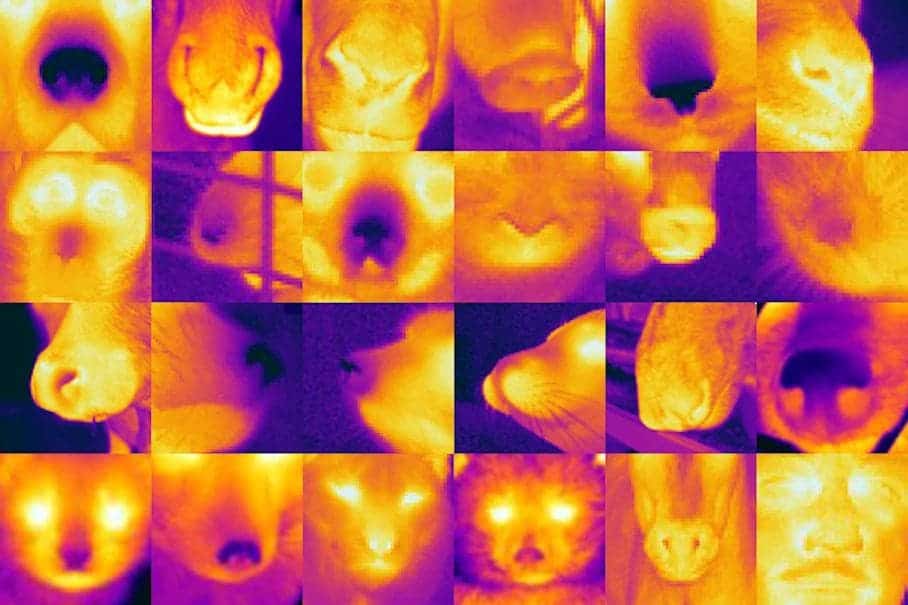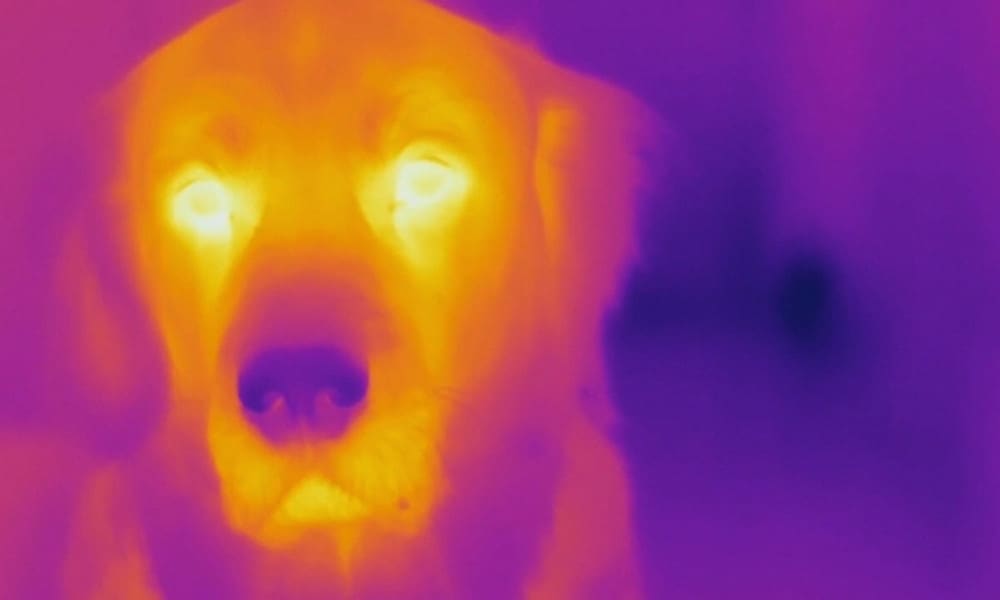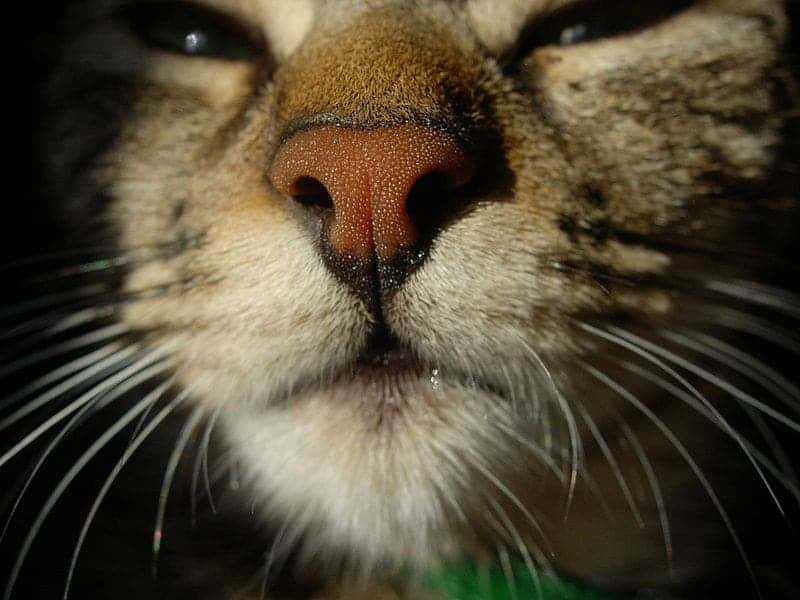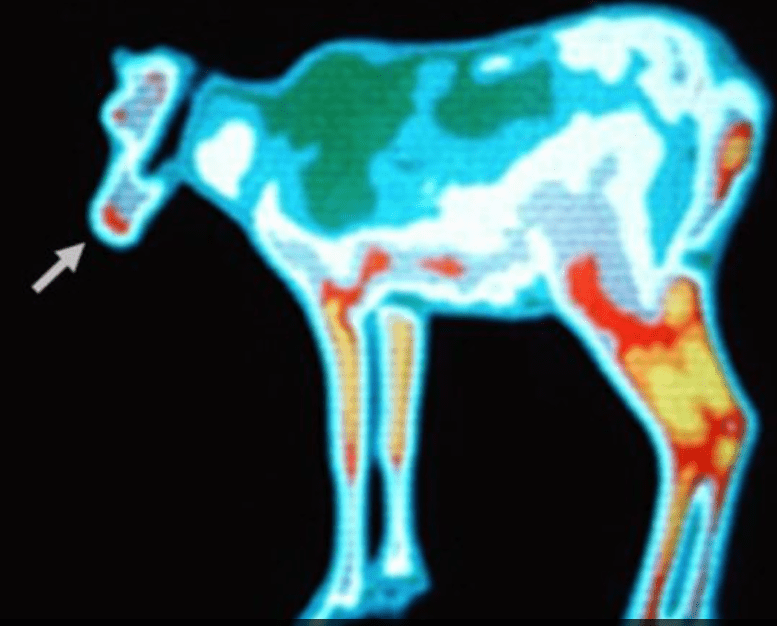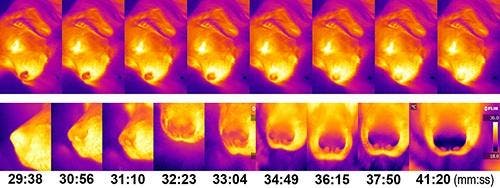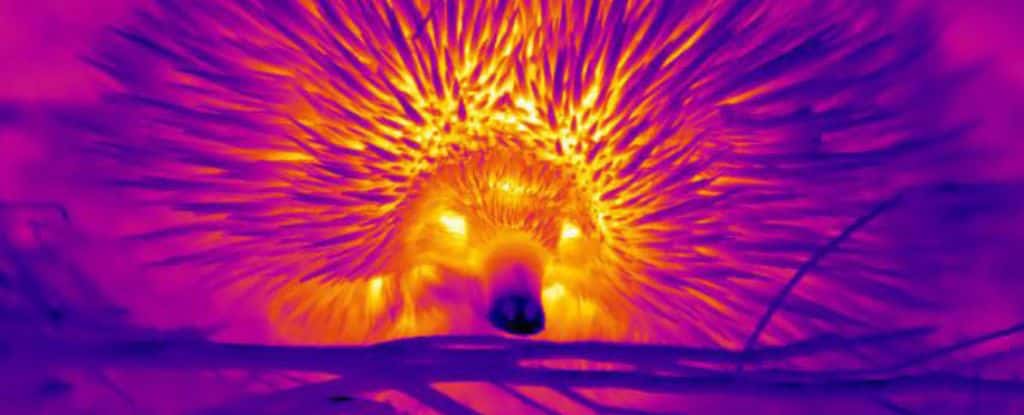These infrared pictures show that some mammals keep their nose warm, while some keep them cold. Can you guess which of the noses below belongs to each animal? Oh, and more importantly, can you guess why their noses are hot or cold? You’ll find the answers at the bottom of this post.
Many mammals, including our beloved cats and dogs, as well as many wild animals, have wet noses — this isn’t a coincidence. A wet nose can help animals smell better. The moisture on their noses dissolves the aromatic molecules, which essentially enhances the animals’ “smell detector”. For some animals, wet noses also serve as thermoregulation, and can also help their respiratory health.
For some animals, noses may also serve as a thermal sensor that can help them detect prey, but scientists aren’t really sure why some animals have colder noses and why others have hot noses. This is where the above-mentioned images come in.
The pictures come from scientists at Lund University in Sweden, and it’s not just about curiosity or about taking nice pictures of cute schnozzes — they are actually studying a specialized mammalian nose structure called the rhinarium.
The rhinarium is the moist, naked surface around the nostrils of the nose in most mammals. In actual scientific usage, it is typically called a “wet snout” or “wet nose” from its moist and shiny appearance.
“We want to know what mammals can do with specialized nose tips,” Lund zoologist Ronald Kröger explains.
Ronald Kröger has been studying animal noses for years, sometimes throughout extreme adversity (he suffered a stroke that severely impeded his work). Over the past decade, Ronald Kröger’s research has largely focused on dog noses.
Dogs’ noses seem to have a kind of colour perception that enable dogs to distinguish between heat radiation from different materials. This came as a complete surprise, and Kröger believes there is a lot to be learnt about the noses of our best friends.
Animal noses are also different in many ways than those of humans.
Many mammals, like dogs, cats, or deer have wet, hairless rhinaria -i however, humans don’t. We like our noses dry. The consequence of this is that the nerve interiors of different noses are also almost certainly very different. Kröger and his colleagues are trying to find out what role the rhinaria play in terms of temperature; in other words, what advantages mammals have from having hot or cold noses.
Previously, he researched animal vision, but interestingly enough, he got curious about rhinaria when his dog touched him with its cold nose, which made him wonder about its unusual temperature.
“I thought, this is so interesting, we have to know more,” he says.
The noses of other mammals also have remarkable adaptations. For instance, by routing warm blood to their nose and lips through a dense network of vessels, reindeer keep their noses sensitive when looking for food in the frigid, snow-covered landscape — a crucial adaptation for living in cold conditions.
Kroger and colleagues filmed reindeer at the Zoo of Nordic Animals in Sweden with thermal cameras, finding that indeed, Rudolph does have a red nose (when seen through a thermal lens).
“When reindeer are feeding, their mules are exposed to very low temperatures as they look for food under the snow,’ said Ronald Kröger, the university’s Professor of Functional Zoology. “They pump warm blood into the mule which means it can be a bit reddish because of this strong blood flow.”
So, coming back to the first image, what noses do the animals belong to? If you want to keep guessing, do so right now, because the answers are coming.
The animals above are:
Row 1: dog, horse, sheep, pig, cat, goat
Row 2: rhesus monkey, rat, kinkajou, rabbit, cow, degu
Row 3: zebu, ring-tailed lemur, meerkat, harbor seal, moose, raccoon dog
Row 4: polecat, arctic fox, lynx, raccoon, common eland, human
Bonus:
Have a look at this dog’s nose as he falls asleep (top row) and then awakes (bottom row). Typically, dogs keep their noses wet a few degrees warmer than the rest of their bodies. However, when they rest, the nose becomes drier and warmer – only to get wetter and colder when they awake.
Bonus 2:
A recent study looked at the nose of echidnas using thermal cameras. The scientists found that echidnas, a unique type of quill-covered mammal, also use their nose for thermal regulation, but in an innovative way: they blow bubbles of snot to stay cool in the scorching Australian outback.
